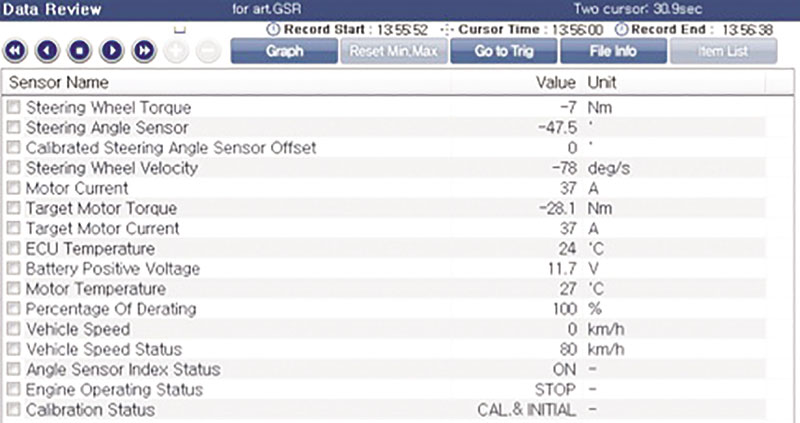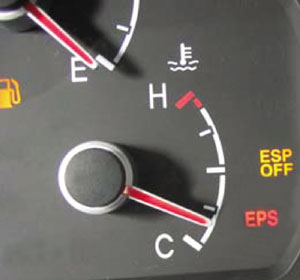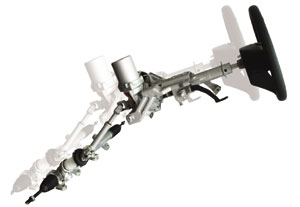In the second of this two-part series, Jim Gilmour, Blue Print Technical Consultant, looks at the communication between the vehicle and potential fault codes.
Last month, Blue Print looked at the construction and operation of the Hyundai i30 electric power steering unit. This time around we’ll be focusing on the communication between the EPS unit and the rest of the vehicle, the safety features built in to the system to protect the driver in the event of an electrical failure and the diagnostic data and trouble codes (DTCs) generated when a fault occurs.
CAN Bus
Electric power steering opens up all sorts of possibilities from speed sensitivity to self-parking and driving. The Hyundai has three features which use information from the CAN Bus system:
- Speed Related Assistance – As the vehicle speed increases, the amount of motor assistance is reduced.
- Active Return – Below 40kmh (25mph) the system will assist the return to the Actual Steering Position (ASP).
- Yaw Dampening – This is a function of the stability programme. Information about excessive understeer or oversteer will affect the amount of assistance if the steering is turned in a direction which will exacerbate excessive yaw – effectively telling you off!
The system is on the CAN Bus and receives the following messages:
■ Engine status; running/not running.
■ Vehicle speed.
The unit also outputs:
■ Steering angle position.
■ Steering angle rate of turn.
This information is used by the stability programme.
Live data
The G-Scan and G-Scan2 are OEM level diagnostic equipment for both Hyundai and Kia and, as you would expect, the live data available from the system is extensive. Most of it is self-explanatory but some of it may require some additional explanation.

Calibrated steering angle offset
This is the difference between the set Actual Steering Position and the centre position, as calculated by comparing wheel speed. Offsets up to 5° are acceptable, but larger offsets indicate the need for recalibration.
Percentage of de-rating
If the temperature of the ECU rises above 85°C the motor current is de-rated – this is a bit of a misnomer. What this actually means is 100% de-rating indicates normal function and will give a maximum current of 78A. Maximum de-rating is 40% which reduces maximum current to 31A, thus limiting the assistance and load on the MDPS unit.
Safety
If the steering fails the steering can still be turned but only with great effort, so a failure of the system would be very disconcerting for the driver. Total failures can be caused by a failure of the motor, its sensors or a loss of battery power.
The system has only five connections:
- A permanent battery positive.
- A permanent battery negative.
- An ignition feed for sensing the ignition status.
- CAN High.
- CAN Low.
Operation

The failsafe relay and motor relay are energised when the ignition is turned on (the ignition is not the source for powering the system, it is only a signal). This gives motor assist, and assistance will continue until all three following conditions are met:
- The ignition feed is off.
- The CAN system indicates the vehicle speed is less than 3Kmh.
- The CAN system indicates the engine speed is less than 500rpm.
These conditions indicate that the vehicle has stopped and the ignition has been turned off so it is safe to shut-down.
Situations which do not meet these conditions are:
- Loss of CAN signal whilst driving.
- Loss of ignition signal whilst driving.
- Loss of both CAN and ignition signal whilst driving.
Under all these circumstances, the system will continue to operate.
 The system has to be tolerant of faults in the electrical system. If the ignition feed is lost and the vehicle speed is greater than 3Kmh or the engine speed is greater than 500rpm for four seconds or more after the ignition is off then the system will continue to operate. The EPS warning light will not illuminate for safety reasons until the start of the next drive cycle.
The system has to be tolerant of faults in the electrical system. If the ignition feed is lost and the vehicle speed is greater than 3Kmh or the engine speed is greater than 500rpm for four seconds or more after the ignition is off then the system will continue to operate. The EPS warning light will not illuminate for safety reasons until the start of the next drive cycle.
If the CAN system fails whilst driving then the system will continue to operate and the EPS light will illuminate. The system will continue to assist for one minute when the ignition is switched off, and if the ignition is switched on and no CAN signal is available, the system will operate with the engine running or not.
What can go wrong?
The system can generate 32 different DTCs, but they can be grouped into types.
Transient faults can occur during operation, such as:
C1261 – ASP not calibrated
This can happen if the battery voltage drops too low during operation, or if the battery is disconnected while the ignition is on.
C1603 – Derating (EPS Thermal Protection)
This complaint is commonly reported by drivers as derating can cause an alarming reduction in assistance.
 C1653/4 – Voltage too high/too low
C1653/4 – Voltage too high/too low
This can be caused by low voltage in the battery or jump starting from another vehicle.
Faults of a more terminal nature include:
C2400 – Motor failure
The system will have detected open or short circuits in the motor windings or a failure of the speed and position sensors.
C1290 – Torque sensor failure
This fault could be either an electrical failure or a failure of the optical system.










